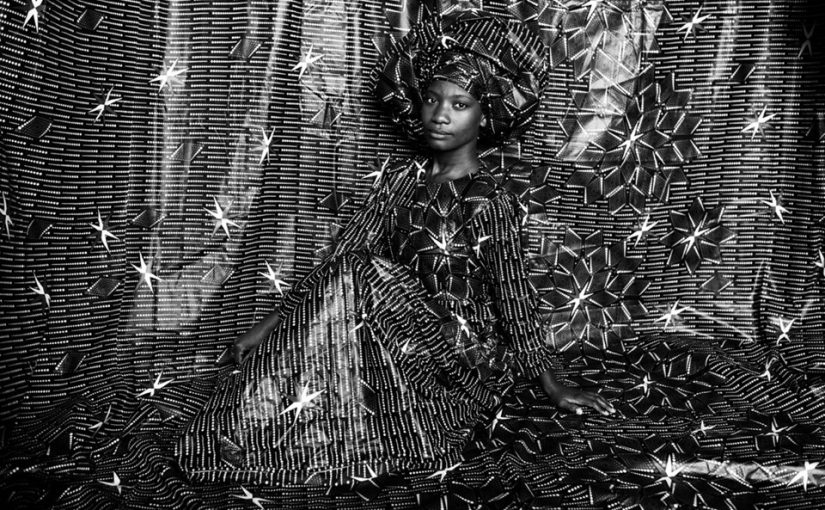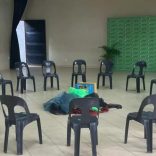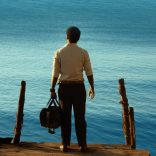Mozambique: "We use theatre as a tool of struggle."
Mozambican photographer Mário Macilau featured at AKAA 2025 Art Fair in Paris

Untitled 2024, Photograph printed on fine art paper, 80 x 120 cm, Edition of 6, © Mário Macilau. Courtesy MOVART via AKAA
Mozambican photographer Mário Macilau will be one of the highlights of the 10th-anniversary edition of AKAA – Also Known As Africa ( one of the leading contemporary art and African design fairs, taking place this weekend in Paris, organisers announced yesterday.
“The poster image, featuring a work by Macilau, represents not only his deeply recognisable visual aesthetic but also the ethical and poetic commitment that underpins his artistic practice,” the AKAA organisers say in a statement.
The organisers explained that they chose one of Macilau’s works as the official poster image for the fair – which will run from this Friday to Sunday – to mark its 10th anniversary, recognising his unique aesthetic and the ethical and poetic vision that characterises his art.
Born in Maputo in 1984, Mário Macilau began his journey in photography in 2003 and turned professional four years later. He is recognised for his immersive, long-term projects that address themes such as identity, politics, spirituality, and social justice.
Macilau said that 2025 has been “a year full of projects and significant encounters” shaping his artistic path.
“Photography, for me, is a way of listening, resisting, and sharing what often remains invisible,” the artist wrote in a post on his Facebook account, adding that this year he is participating in several international exhibitions, notably AKAA 2025 in Paris and ART X Lagos in Nigeria.
Macilau emphasised that these participations represent “a larger journey”, in which art stands as a means to “transform the world socially and environmentally”.
With a career defined by both social and aesthetic commitment, the artist has become one of the most prominent voices in contemporary African photography, using art as a tool for reflection and transformation.
According to AKAA, Macilau’s impact extends beyond borders, with exhibitions at institutions such as the Museum of Modern Art (MoMA) in New York, Tate Modern in London, Fondation Blachère in France, and the Calouste Gulbenkian Foundation in Lisbon.
The photographer has also exhibited at the Venice Biennale (2015), the Vitra Design Museum, the Saatchi Gallery, and the Casablanca Biennale, and has received distinctions including the European Union Environment Award (2015) and the UNESCO-Aschberg Visual Arts Fellowship (2014).
In its 2025 edition, the fair pays tribute to the creative strength of artists, galleries, and curatorial projects that have helped redefine the narratives of contemporary African art over the past decade.
The poster image featuring Macilau’s work symbolises this trajectory – “a singular voice in contemporary photography, addressing themes such as ancestral spirituality, social justice, invisibility, and territory”.
Mário Macilau’s participation in AKAA takes place in collaboration with Movart Gallery, which also celebrates its 10th anniversary in 2025.
“This coincidence marks a point of convergence between two parallel and visionary paths, both committed to strengthening African artistic voices on the international stage,” the organisers added.
Launched in 2016, AKAA has established itself as France’s leading fair dedicated to African and diasporic artists, bringing together creators, curators, and collectors each year at the Carreau du Temple in Paris. In addition to the main exhibition, the event features the cultural platform Les Rencontres, which includes debates, conferences, and performances promoting dialogue on contemporary African art and its transformations.
According to the statement, the Mozambican photographer was also named one of the “10 Manifesta Favourites”, as part of the celebrations marking 10 years of the international contemporary art platform co-founded by Céline Melon and Marie Roussille. The organisation said the recognition “highlights the relevance of his photographic work, which transcends geographical, aesthetic, and spiritual boundaries, building bridges between tradition and contemporaneity”.












Leave a Reply
Be the First to Comment!
You must be logged in to post a comment.
You must be logged in to post a comment.